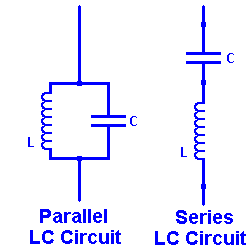

The complex impedance (Z) (real and imaginary, or inductance and reactance) of a capacitor, inductor and resistor in series at a particular frequency can be calculated using the following equations. This calculator calculates angular frequency, the inductive reactance X L and the impedance Z L in complex standard and polar forms. This calculator finds the complex impedance (real and imaginary imaginary values) of a capacitor and an inductor in series. These parameters can be found in the manufacturer's datasheets. 2 f is the angular frequency in radians per second (rad/s) and f is the frequency in Hertz (Hz). At low frequencies, provided the coil is operating in weak fields, the initial permeability μ i value can be used. The higher the frequency, the harder it is for an alternating current to flow. An inductor acts to impede an alternating current. An inductor passes a direct current with essentially no change. This value depends on the ferrite material and the frequency. An inductor (coil) has the following basic characteristics, which is said to be an inductive reactance. Here are the Amidon iron powder toroids calculator and the Amidon ferrite toroids calculator.įor correct calculation at radio frequencies, you have to use the real part of the complex magnetic permeability μ' of the ferrite as the relative permeability μ r.
IMPEDANCE OF INDUCTOR CALCULATOR DOWNLOAD
You can download the cross-platform app Coil64 to calculate ferrite toroid inductance coil offline. The outer diameter of the wire (with insulation) should be using in this calculator. The online calculator uses the wire diameter to determine its length and the possibility of fitting it in the inner diameter of the toroid.

Here you can see the formulas that the calculator uses to calculate the inductance. You have to switch on JavaScript in your browser to work the calculator on this page! Online calculators Multilayer air core inductor on a rectangular form.Self-capacitance of single-layer inductor.Features of calculation of power supply chokes.


 0 kommentar(er)
0 kommentar(er)
